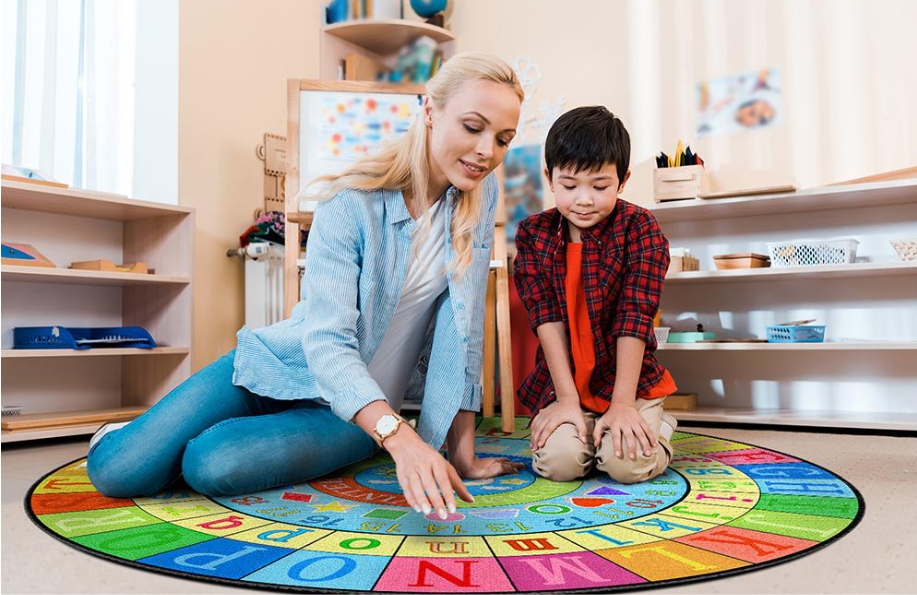Driving Imagination: How Road and Car Rugs Fuel Childhood Development

The unassuming road rug has evolved far beyond a simple bedroom accessory into a powerful developmental tool that shapes cognitive growth, sparks creativity, and builds essential skills in children ages 2-10. These specialized play surfaces, particularly high-quality car rugs, create miniature worlds where children develop crucial abilities while deeply engaged in what appears to be “just play.” Parents and educators increasingly recognize these themed floor coverings as investments in developmental infrastructure rather than mere decorative elements.
Spatial Intelligence Through Roadway Navigation
Developmental psychologists have identified that children who regularly engage with road rug play demonstrate measurably enhanced spatial reasoning abilities. The intricate street layouts, intersections, and landmarks require children to mentally rotate perspectives, understand directional concepts, and develop mental mapping skills—precursors to later mathematical and scientific aptitude. Research from the University of Michigan’s Child Development Lab suggests that children who engage in regular road mat play score 32% higher on spatial relation assessments than peers without similar play experiences.
The bird’s-eye view provided by these play surfaces helps children conceptualize their physical world from multiple perspectives, a cognitive skill that traditionally develops later in childhood. By manipulating toy vehicles across the rug’s terrain, children physically experience abstract concepts like “behind,” “alongside,” and “perpendicular to,” building a robust spatial vocabulary that transfers to academic contexts. This spatial fluency forms the foundation for later success in geometry, geography, and even architectural thinking.
Narrative Development Through Scenario Play
The detailed environments depicted on modern car rugs—featuring schools, hospitals, parks, and commercial districts—provide rich contextual settings for storytelling. Children naturally create complex narratives around these miniature communities, developing characters, conflicts, and resolutions that exercise sophisticated language skills. Speech-language pathologists frequently recommend these themed play surfaces for children needing to develop sequential thinking and narrative structure.
Unlike screen-based entertainment where storytelling is passively consumed, road rug play requires children to actively construct and verbalize their own narratives. This active storytelling builds verbal fluency, expands vocabulary, and strengthens the neural pathways associated with language processing. The open-ended nature of the play environment allows children to practice perspective-taking as they assume different roles within their imagined community—becoming the ambulance driver rushing to an emergency one moment and the school bus driver carefully collecting passengers the next.
Fine and Gross Motor Development Through Vehicle Manipulation
The physical interactions involved in road rug play engage both fine and gross motor skills in developmentally appropriate progression. Younger children typically begin with larger vehicles requiring whole-hand grasping and arm movements, naturally developing shoulder stability and core strength as they navigate their toys across the play surface. As dexterity improves, children transition to smaller vehicles requiring precision grip and controlled finger movements—the same motor skills needed for writing implements and detailed handwork.
Occupational therapists particularly value the subtle incline changes often incorporated into premium road rugs, which require children to modulate pressure and adjust movement patterns as vehicles traverse different terrains. This variability naturally strengthens proprioceptive awareness—the body’s ability to sense position and movement—which directly correlates with classroom readiness skills like posture control and hand dominance necessary for academic tasks.
Social Skills Through Collaborative Play Scenarios
The communal nature of road rug environments naturally fosters crucial social skill development. When multiple children engage with these play surfaces, they must negotiate shared space, establish traffic rules, and coordinate complex scenarios—practicing conflict resolution, turn-taking, and collaborative problem-solving without explicit instruction. These interactions develop essential executive function skills that predict later academic and social success.
Traffic patterns on quality road rugs inherently teach children about rule-following, social contracts, and community functioning. Through play scenarios involving vehicles waiting at intersections or following directional flow, children internalize concepts of social order and mutual respect that transfer to real-world interactions. The miniature world becomes an arena for practicing social courtesies, waiting one’s turn, and understanding the consequences of actions within a community context.
Emotional Regulation Through Problem-Solving Scenarios
The challenges naturally arising during road rug play—traffic jams, construction detours, vehicle breakdowns—create low-stakes opportunities for children to develop emotional regulation skills. When a carefully constructed scenario doesn’t proceed as planned, children must adapt, problem-solve, and manage disappointment in real-time. This authentic practice builds resilience and flexible thinking that transfers to academic and social challenges.
Conclusion
The humble road rug represents a powerful developmental tool disguised as an everyday play item. By creating richly detailed miniature worlds where children can explore spatial relationships, develop narratives, refine motor skills, practice social interactions, and build emotional regulation, these specialized play surfaces deliver remarkable developmental benefits across multiple domains. Parents and educators seeking to optimize children’s learning environments would be wise to consider these floor coverings not as simple décor but as thoughtfully designed developmental equipment with lasting impact on children’s cognitive, physical, and social growth.



